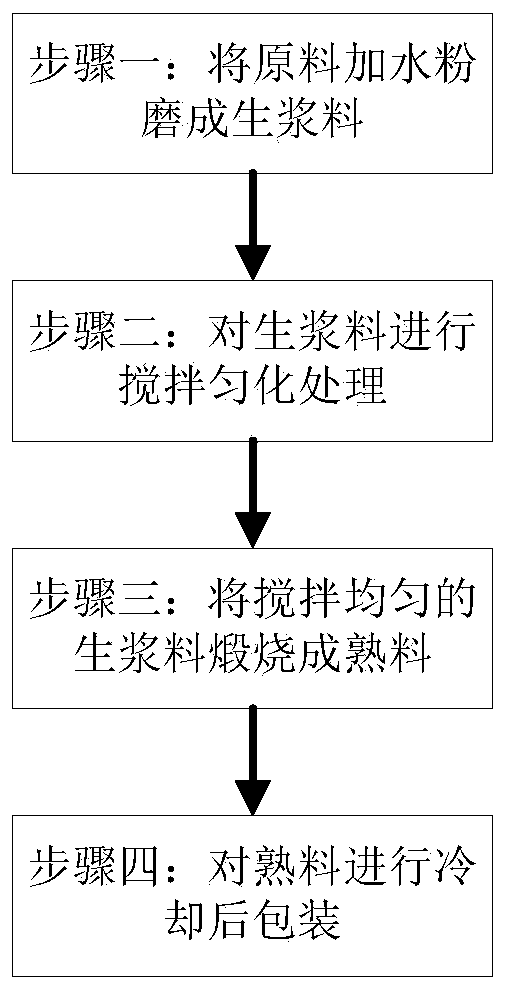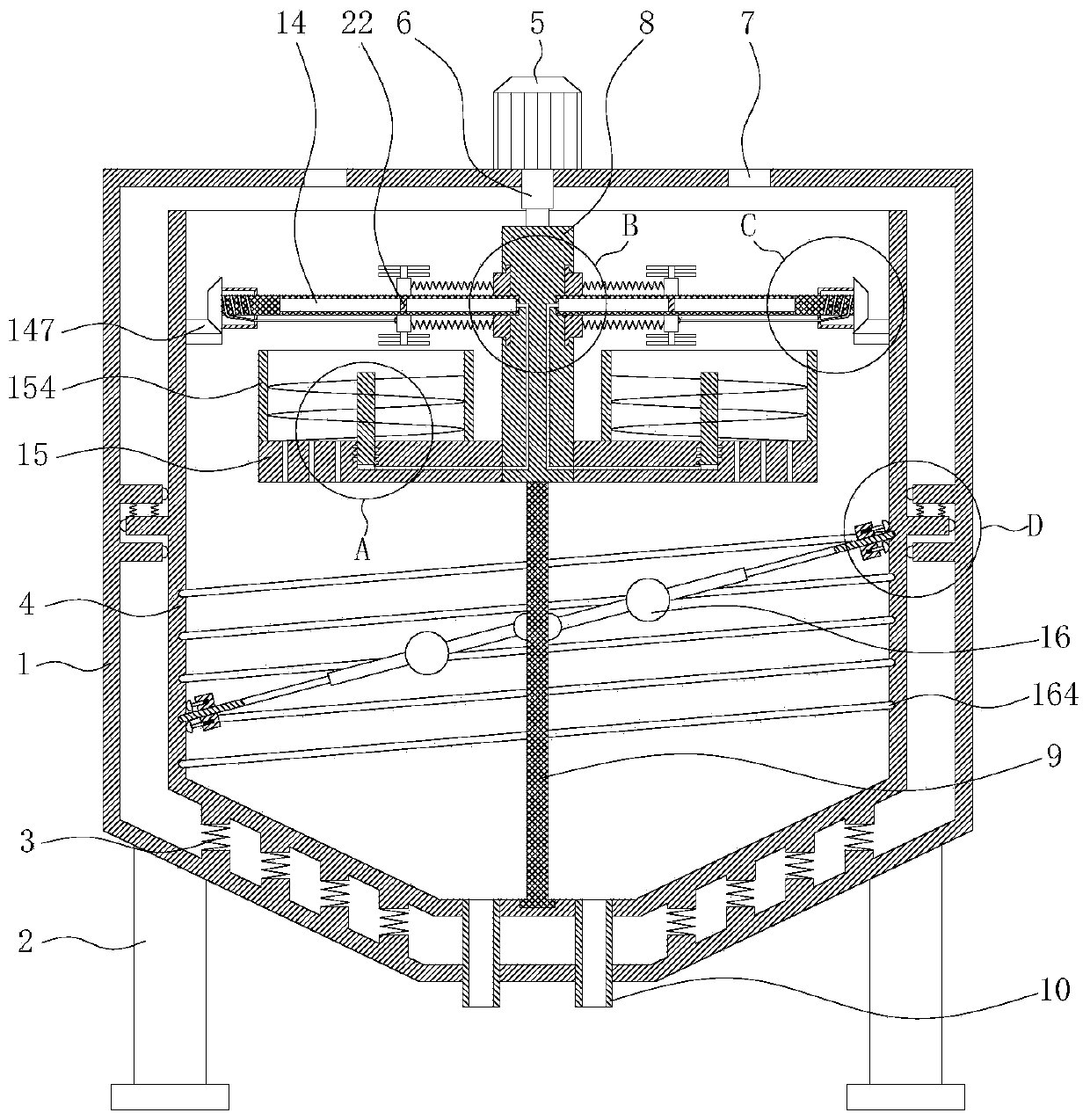Cement production process
A cement production process and raw pulp technology, which are applied in mixers, mixers with rotary mixing devices, transportation and packaging, etc., can solve the problems of reducing the internal volume of the mixing tank, uneven mixing, and shifting the center of gravity of the mixing tank, etc. Achieve the effect of avoiding slurry residue and improving uniformity
- Summary
- Abstract
- Description
- Claims
- Application Information
AI Technical Summary
Problems solved by technology
Method used
Image
Examples
Embodiment Construction
[0032] The embodiments of the present invention will be described in detail below with reference to the accompanying drawings, but the present invention can be implemented in many different ways defined and covered by the claims.
[0033] Such as figure 1 As shown, this embodiment provides a cement production process, including the following steps: Step 1: Add water and grind raw materials to form raw slurry. Step 2: Stir and homogenize the raw slurry. Step 3: calcining the uniformly stirred raw slurry into clinker. Step 4: Pack the clinker after cooling. Wherein step 2 adopts a kind of slurry mixing tank to cooperate to finish, as Figure 2 to Figure 8 As shown, the slurry mixing tank includes a cylindrical outer tank body 1 in a vertical state, the bottom plate of the outer tank body 1 is conical in a downwardly recessed shape, and a support leg 2 is vertically and fixedly installed underneath. The top of the outer tank body 1 bottom plate is vertically fixedly installed...
PUM
 Login to View More
Login to View More Abstract
Description
Claims
Application Information
 Login to View More
Login to View More - R&D
- Intellectual Property
- Life Sciences
- Materials
- Tech Scout
- Unparalleled Data Quality
- Higher Quality Content
- 60% Fewer Hallucinations
Browse by: Latest US Patents, China's latest patents, Technical Efficacy Thesaurus, Application Domain, Technology Topic, Popular Technical Reports.
© 2025 PatSnap. All rights reserved.Legal|Privacy policy|Modern Slavery Act Transparency Statement|Sitemap|About US| Contact US: help@patsnap.com



